#Kundalini energy activation
Text
Third Eye Opening

Unlocking the Third Eye: Transforming Health and Perception!
Opening the third eye, often associated with the concept of spiritual awakening and heightened awareness, is believed to offer a range of potential benefits, including some that can positively impact one's physical and mental well-being. Here are three of the most important benefits often associated with opening the third eye:
1) Improved Immune System: Opening the third eye is thought to enhance the body's overall balance and energy flow. This can lead to a strengthened immune system. By promoting physical and mental well-being, a balanced and healthy body can better defend against illnesses. The reduced stress and increased vitality associated with third-eye activation may contribute to a more robust immune response, helping the body to ward off infections and diseases more effectively.
2) Enhanced Vision Beyond Reality: Opening the third eye is often linked to heightened perception and intuition. It's believed that an open third eye can grant individuals access to deeper insights, greater clarity, and a broader understanding of the world around them. This can lead to improved decision-making and a deeper appreciation of life. It's not so much about literal vision but rather seeing beyond the surface, gaining insight into one's own life and the interconnectedness of all things. This expanded perspective can provide a profound sense of purpose and meaning, reducing anxiety and stress.
3) Reduction of Brain and Psychological Diseases: The practice of opening the third eye is often associated with meditation, mindfulness, and other techniques that promote mental well-being. Regular meditation and other mindfulness practices can reduce stress and anxiety, which are known to contribute to various psychological and neurological conditions. By maintaining a calm and focused mind, individuals may experience a reduction in the risk of developing conditions like depression, anxiety disorders, and even neurodegenerative diseases such as Alzheimer's. The balance and harmony achieved through third-eye activation may contribute to an overall improvement in mental health.
!!!ATTENTION!!!
Remember that unlocking the third eye without an experienced healer can pose serious risks. If you want to learn more, feel free to contact me.
I offer to all my new customers a FREE ENERGY CHECK: a practice to understand your chakras status, your aura status, the status of your third eye and if you have curses, evil eyes, blockages or entities attached.
Aren't you curious?
Contact me now and book your FREE ENERGY CHECK
#energy#spiritual#spells#chakras#spell#spirituality#balance chakras#third eye activation#third eye#meditation#intuition#third eye open#third eye opening#third eye blind#third eye surgery#third eye chakra#pineal gland#pineal power#pineal health#kundalini#spiritual awakening#spiritual growth
3 notes
·
View notes
Text
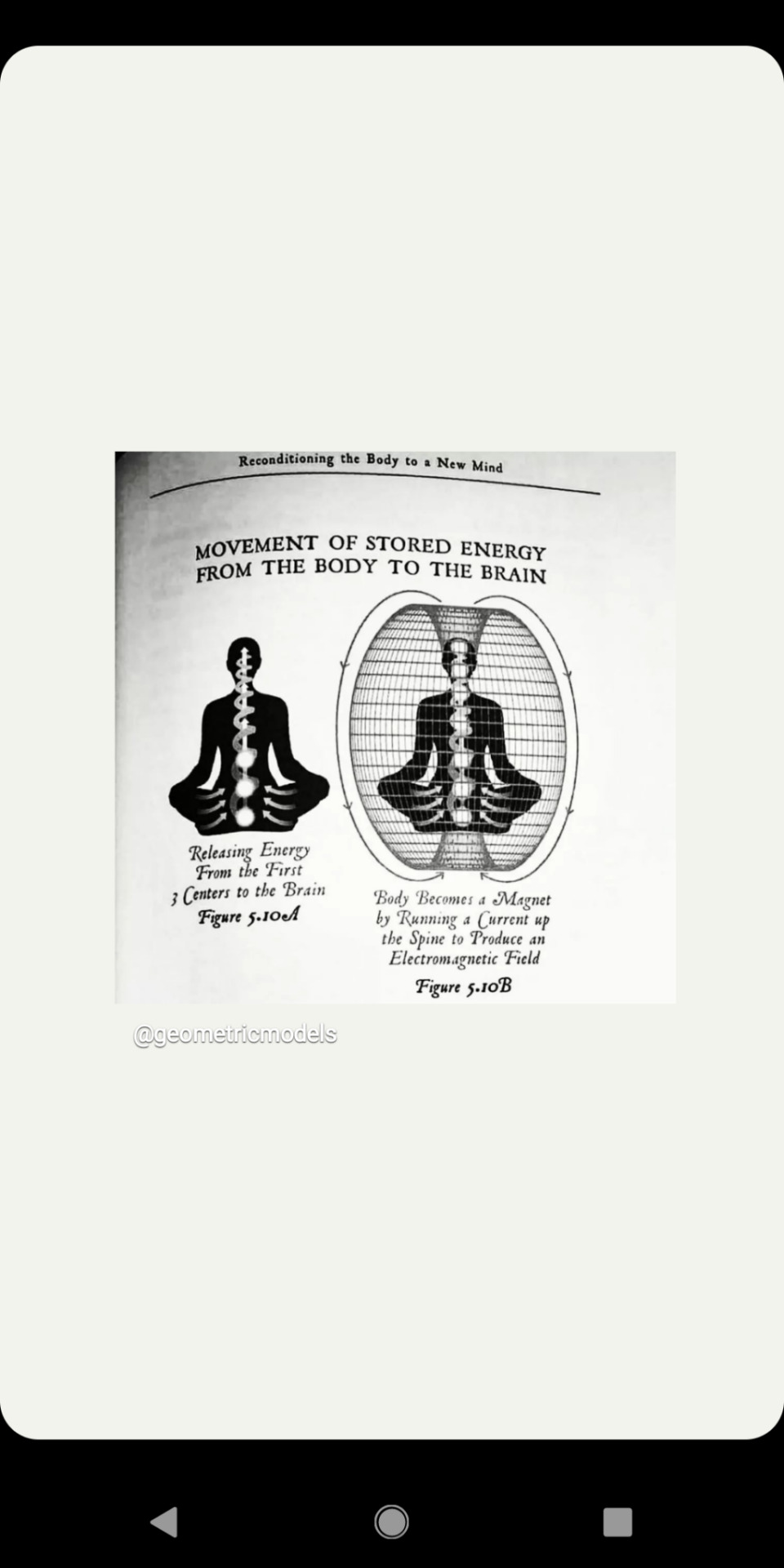
10 notes
·
View notes
Text
Flower Moon: Full Moon in May 2023
May's full Flower Moon reaches peak illumination at 1:36 P.M. Shaktipat will be at 9:00 p.m. PST(EDT) on Friday, May 5.
-chrism kundalini
#kundalini awakening#quotes#meditate#evolution#kundalini#kundalini activation#quote#kundalini energy#kundalini shaktipat#shaktipat#chrism kundalini#master chrism#join us
12 notes
·
View notes
Video
youtube
Watch this meditation music video to the end and you may feel bliss rush up your spine! This is extremely powerful meditation music that awakens Kundalini Shakti.
The full 30 minute track is incredibly potent with Shakti. It gradually builds over time, with sudden rushes of bliss peaking in ecstatic intensity around 22 minutes & then slowly mellows.
For this music video, I mixed the track so you can have a taste of the full experience in just under 9 minutes.
#youtube#kundalini#kundalini awakening#kundalini shakti#kundalini energy#kundalini activation#enlightenment#kundalini meditation#kundalini yoga#meditation music#spiritual awakening#shaktipat
6 notes
·
View notes
Text
The natural biomolecular compounds necessary to activate the kundalini chakra have been generally inaccessible for a long time.
2 notes
·
View notes
Text
#visionaryart#body art#trippy art#dark surrealism#retrofuturism#blacklight#led lights#reiki energy medicine#kundalini#activation#full moon#tarot#the hermit#the high priestess#love#light#art#original art#painting
4 notes
·
View notes
Text

New Lecture!
Ever wonder why New Year’s resolutions don’t work? While we might will something, it may not come to fruition because we lack energy, enthusiasm, and consistency for accomplishing it. Likewise, without proper spiritual force, we will not have the inspiration, comprehension, and zeal for overcoming resistance. Learn how to conserve and harness energy for the awakening of your spirituality, specifically through exercises of pranayama, chakra work, and sacred sexuality.
#gnosticism#gnosis#gnostic tradition#gnostic bible#chicago gnosis podcast#gnostic academy of chicago#chicago gnosis#spirituality#consciousness#meditation#awakening#gnostic#samael aun weor#true self#self transformation#self knowledge#self empowerment#energy awakening#spiritual energy#kundalini energy#energy work#kundalini activation#kundalini#kundalini awakening#spiritual enlightenment#spiritual exercises#spiritual path#spiritual growth#spiritual healing#spiritual journey
1 note
·
View note
Text
The Journey Within: Exploring the Signs of Spiritual Awakening and Kundalini Activation
Introduction
In the realm of personal growth and self-discovery, the concept of spiritual awakening and Kundalini activation holds a profound significance. These transformative experiences represent a shift in consciousness, leading individuals towards a deeper understanding of their true nature and a heightened sense of awareness. This article aims to explore the various signs associated with spiritual awakening and the awakening of Kundalini energy, shedding light on the remarkable journey that awaits those who embark upon it.

Heightened Awareness and Perception
One of the initial signs of spiritual awakening is a heightened sense of awareness. Individuals may find themselves more attuned to their surroundings, noticing subtleties they previously overlooked. This newfound perception extends beyond the physical realm, encompassing emotional, energetic, and spiritual dimensions.
Intense Emotional Shifts
As one undergoes a spiritual awakening, they often experience intense emotional shifts. This can range from deep-seated joy and gratitude to moments of profound sadness or even existential angst. These emotions are an integral part of the process, serving as a catalyst for inner growth and self-discovery.
Increased Synchronicities
Synchronicities, or meaningful coincidences, become more prevalent during a spiritual awakening. Individuals may find themselves encountering circumstances, people, or symbols that hold significant meaning or offer guidance along their path.
Heightened Intuition
Intuition, often referred to as a "gut feeling" or an inner knowing, becomes more pronounced. Trusting one's instincts and inner guidance becomes crucial as individuals navigate their evolving spiritual landscape.
A Shift in Perspective on Life and Existence
A profound shift in one's perspective on life and existence is a common hallmark of spiritual awakening. Questions about the nature of reality, the purpose of life, and the interconnectedness of all beings often take center stage.
Vivid Dreams and Spiritual Experiences
Dreams become more vivid and may carry significant symbolism or messages. Some individuals may also report experiencing spiritual encounters or insights during dream states or altered states of consciousness.
Heightened Sensitivity to Energy
Sensitivity to energy, both within oneself and in the external environment, increases. This heightened sensitivity can lead to a deeper understanding of the energetic interplay between individuals, places, and situations.
Physical Sensations and Kundalini Activation
Kundalini, often described as a dormant spiritual energy coiled at the base of the spine, can become activated during a spiritual awakening. This activation may be accompanied by physical sensations, such as tingling, warmth, or even a sense of electrical currents moving up the spine.
Chakra Awakening and Balancing
The chakra system, which represents the energy centers within the body, may undergo awakening and balancing. This process can lead to a more harmonious flow of energy throughout the physical and subtle bodies.
Desire for Inner Transformation and Growth
A deep-seated desire for inner transformation and personal growth emerges. Individuals may feel a strong pull towards practices like meditation, yoga, mindfulness, and other spiritual disciplines that facilitate their journey towards self-realization.
Conclusion
The signs of spiritual awakening and Kundalini activation represent a transformative journey towards self-discovery, heightened awareness, and a deeper connection to the universal consciousness. It's important to approach this journey with openness, patience, and a willingness to embrace the unknown. Each individual's experience is unique, and the path towards spiritual awakening is a deeply personal one. As one navigates these signs, it is crucial to seek guidance, support, and cultivate self-compassion along the way. Embracing the process of awakening is an invitation to step into a more authentic, connected, and purposeful existence.
#spiritual awakening#Kundalini activation#awareness#perception#emotional shifts#synchronicities#intuition#shift in perspective#vivid dreams#spiritual experiences#sensitivity to energy#physical sensations#chakra awakening#inner transformation#personal growth#universal consciousness#openness#patience#self-compassion#authenticity#interconnectedness#mindfulness#self-discovery
0 notes
Text
Energy update
Change and ongoing change. Sometimes, there is a little surprise at just how fast things change. At the same time, it isn’t any surprise, because if you tune into the field and the torus, you can feel it. Feel the deep arising. Feel the movement of the torus, the spin speed up, becoming stronger. More present.
Realigning.
So that, in a nutshell, is my sense of the field at present. The heaviness of last week has dissolved.
Well, a lot of work was done in and with the energy field, so why I feel astonished, I’m not sure.
But anyway, the heaviness is gone, and now the arising is coming in stronger. And so much more powerful.
You might feel it coming in through the base, moving up the spine. Or in the lower abdomen, as fire or lightness or expansion. If your physical body has a womb, you might feel something shifting and changing there. Expansion again. A sense of openness. Of light and space - so much space ...
I feel all of that and more. Around the upper back, the shoulders.
There is an aliveness in the body, in the cells that wasn’t there before.
Though that might actually be due to the now daily, 3-minute-long cold showers. Yes, these are amazing, and if you are committed to walking the spiritual path, committed to doing the inner work and towards ascension, I highly recommend starting on these. You will gain enormously. Just give it a try, see how it goes.
Coming back to my sene of the field, I would like to add this:
The arising is coming in strong. STRONG. Now is the time to prepare yourself for it. Fast. Meditate. Do the inner work, so that when it hits, there is less inside of you to shatter under the uprising energies.
This is Gaia’s kundalini energy rising. More powerful than before.
This is what we have been waiting for and working towards.
This is the ascension.
#energy update#what is going on in the field#kundalini activation#kundalini rising#ascencion#The Ascension#ascension process#accelerating ascension#spiritual practices
0 notes
Text
Activating Kundalini Energy is the main mantra. Kundalini energy is a spiritual energy that is located at the base of the spine.
0 notes
Text
Purva Bhadrapada | World Wanderer


Purva Bhadrapada, unfolds a cosmic dance that intertwines mythology, symbolism, and the mysteries of the universe. Governed by the celestial forces of Saturn and Jupiter, this Nakshatra is home to the enigmatic deity Aja Ekapada, often associated with the awe-inspiring form of Lord Shiva as Nataraja. This article delves into the profound symbolism embedded in Purva Bhadrapada, connecting the dance of creation and destruction with elements ranging from Hindu mythology to modern physics, exploring the dualities of existence and the spiritual journey
Nataraja - The Cosmic Dancer
In the ethereal realm of divine dance, Nataraja, the one cosmic manifestation of Lord Shiva, continues to unfold a mesmerizing tapestry that captures the essence of creation, destruction, and the cyclical nature of existence. This celestial dance, a sublime choreography known as Pralaya, resonates with profound symbolism that transcends the boundaries of mythology, offering a timeless allegory for the eternal transformation of energy in the cosmic order.
The untamed locks of Lord Shiva, a visual manifestation of asceticism, stand in stark contrast to his role as a householder. This duality encapsulates the multifaceted nature of Shiva, symbolizing his ability to seamlessly oscillate between the transcendent and the worldly. The unruly hair, flowing freely as he dances, represents a rejection of societal norms, an embodiment of the ascetic spirit that eschews material attachments while actively participating in the cosmic drama
The sacred Ganges, coursing through the tangled strands of Shiva's hair, assumes a pivotal role in the cosmic dance. Its descent from the heavens to Earth is not merely a celestial event but a symbolic act guided and protected by Shiva. This divine intervention not only breaks the fall of the sacred river but also alludes to the interplay between the celestial and terrestrial realms. The Ganges, now residing in Nataraja's locks, becomes a potent symbol of purity, spirituality, and the interconnectedness of the cosmic forces.
The crescent moon, delicately placed in Shiva's matted hair, holds profound significance in the cosmic ballet. Its waxing and waning influences Kama Dev, the god of nightly love, breathing life into the changing seasons that govern the universe. The rhythmic dance of Nataraja, guided by the lunar phases, symbolizes the perpetual cycle of birth, growth, decay, and regeneration. In this celestial choreography, Shiva orchestrates the cosmic symphony, ensuring the harmonious flow of life's eternal dance.
At the heart of Nataraja's dance is Pralaya, the cosmic dissolution that marks the end of an existing order. This transformative phase emphasizes the impermanence of the material world and the continuous cycle of creation and annihilation. As Shiva engages in the rhythmic dance, the universe dissolves into him, highlighting the profound truth that energy can neither be created nor destroyed; it only undergoes perpetual metamorphosis.
In Shiva's hand, the damaru, an hourglass-shaped drum, reverberates with a rhythmic beat that echoes the cosmic pulse. This incessant sound symbolizes the ceaseless recreation of the universe. The damaru's beats resonate with the vibrations that underpin the fabric of reality, creating a cosmic harmony that sustains the intricate dance of life, death, and rebirth.
The serpent coiled around Nataraja's arms in the cosmic dance further amplifies the symbolism within Purva Bhadrapada. The serpent, often a symbol of primal energy and kundalini, signifies the power over deadly creatures and echoes the transmigration of human souls. As the serpent sheds its skin, symbolizing rebirth, it mirrors the cyclical nature of existence, reinforcing the idea that life is an ever-evolving journey of transformation and renewal.
As Nataraja's cosmic dance unfolds, the symbolism embedded in each gesture and element becomes a profound meditation on the nature of existence.
Aja Ekapada
In this sacred Nakshatra, the celestial dance of Lord Shiva takes on profound layers of symbolism, weaving an intricate tapestry that extends far beyond the cosmic dance of Nataraja. Aja Ekapada, the presiding deity of this Nakshatra, emerges as a symbolic powerhouse.
Described as a kind of Agni, Aja Ekapada embodies the transformative power of fire. The flames of Agni in Hindu tradition represent not only the destructive force but also the purifying and regenerative aspects. In the context of Purva Bhadrapada, this fiery essence takes on multifaceted roles, resonating with the rituals of funeral rites, the tumultuous energy of storms, and the mysterious realm of black magic and occult practices. Aja Ekapada, in its fiery form, becomes a symbol of transition, where the old dissolves to make way for the new.
Purva Bhadrapada intricately weaves together various elements, creating a complex narrative that bridges Hindu mythology with the intricacies of our physical and spiritual existence. The mention of spinal nerves, sacrificial altars, and guardians of goddesses adds layers of depth to this celestial story. The spinal nerves, conduits of electrical signals between the brain and the body, symbolize the interconnectedness of our physical and spiritual selves. The sacrificial altars evoke the idea of offering and surrender, essential elements in the journey of self-realization. Guardians of goddesses suggest protective forces that guide and shape our spiritual path.
The symbolism deepens with references to tiger skin, pillars, and the fiery red color. Tiger skin, traditionally associated with Lord Shiva, represents the conquest of fear and the taming of primal instincts. Pillars stand as symbols of support and stability, echoing the cosmic pillar of the universe upheld by Shiva in his dance. The fiery red color, reminiscent of Agni's flames, symbolizes the intensity of transformation and the dynamic energy inherent in Shiva's cosmic dance.
Science
The intersection of Vedic symbolism and modern scientific concepts unveils a captivating tapestry that bridges the ancient and the contemporary. This essay further explores the profound parallels between the cosmic dance of Nataraja and scientific phenomena like the Einstein-Rosen Bridge, the Higgs boson, and the cosmic dance of subatomic particles. The metaphorical connection crafted by Carl Sagan serves as a beacon, guiding us through the seamless integration of ancient wisdom with our evolving understanding of the cosmos
The Einstein-Rosen Bridge, often colloquially referred to as a wormhole, represents a hypothetical tunnel-like structure connecting two separate points in spacetime. In the dance of Nataraja, we find intriguing parallels with the concept of the cosmic dance of subatomic particles, where the rhythmic beat of Shiva's damaru symbolizes the underlying pulse of the universe and a bridge in space and time. The concept of a bridge that transcends the ordinary dimensions of space and time echoes the transcendental nature of Nataraja's dance, a cosmic ballet that extends beyond the boundaries of conventional understanding.
In Vedic symbolism, Nataraja's dance represents the eternal cycles of creation, preservation, and dissolution. The Einstein-Rosen Bridge, if ever realized, would serve as a cosmic conduit, allowing particles and perhaps even information to traverse vast cosmic distances instantaneously. The dance of Nataraja, likewise, serves as a bridge between the material and the spiritual, embodying the interconnectedness of all existence.
The Higgs boson, often dubbed the "God particle," is a subatomic particle that bestows mass upon other particles through the Higgs field. The Higgs boson, as a fundamental particle shaping the fabric of the universe, parallels Shiva's role in creating different seasons and rejuvenating life through the waxing and waning of the moon.
Nataraja's dance, representing the dissolution of the existing order and the eternal transformation of energy, aligns with the transformative nature of the Higgs boson. Both concepts speak to the fundamental aspects of existence, emphasizing the interconnectedness of particles and cosmic forces in shaping the universe's intricate dance.
The dance of subatomic particles, a mesmerizing ballet occurring at the quantum level, mirrors the celestial dance of Nataraja. As particles interact and exchange energy, creating a dynamic interplay, Shiva's dance resonates with the intricate choreography of the quantum realm. The damaru's rhythmic beat in Nataraja's hand finds its parallel in the pulsating nature of particles, creating waves and resonances that echo through the cosmos.
The concept of the cosmic dance of subatomic particles delves into the interconnectedness of all matter and energy, akin to the interconnected gestures and postures in Nataraja's dance. The dance becomes a metaphor for the underlying unity in the seemingly diverse and complex fabric of the universe, where every movement holds significance in the cosmic symphony.
Carl Sagan, a luminary in popularizing science, drew a metaphorical connection between the cosmic dance of Nataraja and the scientific understanding of the 'cosmic dance' of subatomic particles. Sagan's eloquent exploration aligns with the broader theme of the essay, highlighting the synergies between ancient wisdom and modern scientific inquiry. The metaphor invites us to contemplate the cosmic ballet on both macro and micro scales, emphasizing the unity that pervades the cosmos.
Sagan's metaphorical bridge between the dance of Shiva and the dance of particles serves as a testament to the enduring relevance of Vedic symbolism in contemporary scientific discourse. It prompts us to consider the possibility that the ancient seers, through their symbolic language, may have intuited truths about the nature of the universe that are only now being revealed through the lens of advanced scientific instruments and theories.
Mad Scientist Archetype
One intriguing facet of Purva Bhadrapada finds resonance with the archetypal figure of the 'Mad Scientist.' Delving into the layers of this Nakshatra, we discern how its inherent themes align with the characteristics commonly associated with the 'Mad Scientist' archetype.
Symbolized by the two-faced man, encapsulates the theme of duality. This duality is not merely a surface-level contrast but a profound exploration of contrasting energies coexisting within an individual. The 'Mad Scientist,' often portrayed as a genius teetering on the edge of sanity, mirrors this duality. The scientist's transformational experiments and unconventional pursuits underscore a journey into the realms of both brilliance and madness, akin to the cosmic dance of Purva Bhadrapada.
Aja Ekapada, embodies the fiery essence of unconventional thinking and innovation. The 'Mad Scientist,' driven by a relentless pursuit of knowledge and discovery, often defies societal norms and embraces uncharted territories in the pursuit of scientific breakthroughs. Purva Bhadrapada's influence fosters an environment where unconventional ideas are not only accepted but embraced as a means of unraveling hidden truths.
Purva Bhadrapada's connection with occult practices, black magic, and mystical realms draws parallels with the 'Mad Scientist's' often secretive and esoteric experiments. Both explore the boundaries of the known and the unknown, pushing the limits of human understanding. The Nakshatra's association with Aja Ekapada as a deity of funeral rites and storms aligns with the archetypal scientist's relentless pursuit of unlocking the mysteries of life and nature.
The 'Mad Scientist' archetype frequently grapples with the ethical implications of their experiments. Similarly, Purva Bhadrapada, with its two-faced symbolism, reflects the dual nature of morality. The Nakshatra challenges conventional notions of right and wrong, encouraging a deeper exploration of the shades of gray that exist in the pursuit of knowledge and power.
This Nakshatra's emphasis on transformation and the eternal dance of creation, preservation, and dissolution echoes the 'Mad Scientist's' quest to transform not only the world but themselves. The scientist's pursuit of knowledge often involves a personal transformation, blurring the lines between sanity and madness, mirroring the cyclical nature depicted in Purva Bhadrapada.
Purva Bhadrapada's connection with the sacrificial alter and its association with Aja Ekapada as a deity of storms and black magic aligns with the 'Mad Scientist's' often sacrificial commitment to their visionary pursuits. The archetype willingly sacrifices personal well-being and societal acceptance in their relentless pursuit of scientific knowledge, echoing the sacrificial undertones embedded in the Nakshatra's symbolism.
The enigmatic nexus between Purva Bhadrapada and the 'Mad Scientist' archetype unveils a shared terrain of duality, transformation, and unconventional exploration. Both embody a ceaseless dance between brilliance and madness, pushing the boundaries of human understanding.
In the realm of cinema, the portrayal of Robert De Niro (PBP Moon) and James McAvoy (PBP Ketu) in roles associated with the 'Mad Scientist' archetype serves as compelling examples of the enduring fascination with characters who delve into the boundaries of morality, creation, and the consequences of playing god. Robert De Niro's depiction as Frankenstein's monster in the film captures the essence of the 'Mad Scientist' archetype. Dr. Victor Frankenstein's relentless pursuit of scientific knowledge leads to the creation of a creature he seeks to destroy, only to face the repercussions of his actions as the monster returns with a thirst for revenge. The narrative unfolds the classic trope of a scientist grappling with the unintended consequences of tampering with the natural order.
Similarly, James McAvoy's portrayal in a film centered around Victor Frankenstein underscores the archetype's thematic complexity. In this iteration, Victor collaborates with Igor Strausman for groundbreaking research on immortality, a quest that propels them into the precarious realm of manipulating life and death. The narrative takes a horrific turn, reflecting the archetype's tendency to unleash forces beyond human control. Igor, recognizing the potential havoc, attempts to intervene, highlighting the ethical dilemmas that often accompany the 'Mad Scientist' as they tread on the thin line between scientific advancement and moral consequences. These cinematic portrayals stand as poignant reminders of the archetype's timeless allure, exploring the intricate dance between genius and the unforeseen repercussions of pushing the boundaries of scientific exploration.
Jekyll & Hyde Archetype
In the exploration of Purva Bhadrapada's deep symbolism reveals striking parallels with the dichotomy embodied by Dr Jekyll and his malevolent alter ego, Mr Hyde.
The central theme of Dr Jekyll & Mr Hyde mirrors Purva Bhadrapada—the duality within a single individual. This Nakshatra encapsulates the idea that within the human psyche, contrasting energies coexist, often in an intricate dance that blurs the lines between good and evil. Dr Jekyll's internal struggle with his dual nature reflects the nuanced exploration of light and shadow inherent in Purva Bhadrapada.
Both Purva Bhadrapada and the Dr Jekyll & Mr Hyde narrative revolve around the transformative power within. The Nakshatra's emphasis on creation, preservation, and dissolution aligns with Dr Jekyll's quest to transform his own nature. However, just as Purva Bhadrapada's dance entails a cycle of transformation, Dr Jekyll's experiments lead not only to his liberation but also to the release of the malevolent Mr Hyde, the embodiment of his darker impulses.
Purva Bhadrapada delves into the dual nature of morality, challenging conventional notions of right and wrong. Similarly, Dr Jekyll's experiment represents a bold foray into the blurred boundaries between societal morality and personal desires. The internal conflict faced by Dr Jekyll in resisting the temptations embodied by Mr Hyde echoes the Nakshatra's exploration of the fine line between righteousness and temptation.
The Nakshatra's association with Aja Ekapada, embodying fiery funeral rites and occult practices, parallels Dr Jekyll's unconventional scientific pursuits. Both delve into realms beyond the ordinary, challenging societal norms and exploring the mysteries that lie beneath the surface. The 'mad scientist' archetype, represented by Dr Jekyll in this context, aligns with Purva Bhadrapada's inclination toward unorthodox paths of knowledge.
There is a profound exploration of the consequences of unleashing inner demons. The malevolent aspects of the Nakshatra, symbolized by storms, black magic, and occult influences, find their counterpart in Mr Hyde's unrestrained malevolence. The collateral damage wrought by Dr Jekyll's experiments becomes a cautionary tale, underscoring the potential dangers of delving too deep into the mysteries of the self.
In the eternal cosmic dance symbolized by Purva Bhadrapada, we find echoes of Dr Jekyll's struggle, a timeless reminder that the exploration of one's depths is a venture fraught with both enlightenment and peril.
The cinematic landscape, adorned with diverse narratives, often unfolds tales that mirror the timeless archetype of Dr Jekyll and Mr Hyde, encapsulating the nuanced exploration of dual personas within a single individual. In the Bollywood film "Chehre Pe Chehra," the enigmatic Rekha(PBP Moon) takes center stage in a narrative reminiscent of the classic duality of Dr Jekyll & Mr Hyde. The storyline unravels the complexities of human nature, unveiling the transformation of characters and the consequences of inner conflict.
Similarly, Michael Caine (PBP Sun), in a Victorian era setting, personifies the archetype in a cinematic rendition where scientific experiments into the dual nature of man yield a personality-splitting drug. His portrayal echoes the timeless struggle with the darker facets of the human psyche, bringing forth the uninhibited brute, Mr Hyde, who seeks violent and undignified pleasures. Caine's performance exemplifies the enduring allure of the Dr Jekyll & Mr Hyde archetype, showcasing the perpetual fascination with the exploration of contrasting elements within the human soul.
In a comedic twist, Eddie Murphy (PBP Mercury)'s character in a narrative involving genetics and self-experimentation provides a contemporary lens to the archetype. The transformation from an extremely overweight genetics professor to an obnoxious figure after experimenting with a slimming potion mirrors the transformative themes of the Dr Jekyll & Mr Hyde archetype. The narrative delves into the consequences of tampering with one's physical form, drawing parallels to the eternal struggle between light and shadow within.
Bipasha Basu (PBP Ketu)'s portrayal in a film called Alone, where an evil spirit seeks to wreak havoc in the life of Sanjana, with connotations of sibling rivalry and jealousy, bears semblance to the archetype. The dual personas within the character reflect the intricate dance between good and malevolent forces, akin to the timeless narrative of Dr Jekyll and Mr Hyde.
In these cinematic examples, the Dr Jekyll & Mr Hyde archetype persists as a timeless and captivating theme, transcending genres and cultures. Each portrayal underscores the fascination with the internal struggle, the consequences of self-experimentation, and the perpetual dance between conflicting facets of the human psyche.
Fallen Angel Archetype
After delving into the layers of Purva Bhadrapada's symbolism unveils striking parallels with the poignant narrative of celestial beings descending from grace—a theme intrinsic to the fallen angel archetype.
Purva Bhadrapada, mirrors the fallen angel's descent from celestial realms into the complexities of earthly existence. This Nakshatra encapsulates the idea that within the celestial and divine, dualities coexist, often leading to a profound journey of self-discovery and transformation. The fallen angel archetype, speaks to the intricacies of navigating through contrasting energies and the challenges posed by the earthly realm.
The fallen angel archetype often involves a narrative of temptation and rebellion against the divine order. Similarly, Purva Bhadrapada's association with Aja Ekapada, embodying fiery funeral rites, storms, and occult practices, suggests a journey marked by the allure of forbidden knowledge and a departure from established norms. The Nakshatra's exploration of the boundaries between morality and temptation resonates with the theme of celestial beings succumbing to earthly desires in the fallen angel narrative.
In the fallen angel archetype, the descent is often accompanied by themes of sacrifice and the potential for redemption. Purva Bhadrapada's connection with the sacrificial alter and its association with a form of Rudra, storms and black magic aligns with the archetype's emphasis on sacrifice as a means of grappling with the consequences of the descent. The possibility of redemption, a recurring motif in the fallen angel narrative, echoes the Nakshatra's transformative energy and the cyclical nature of creation, preservation, and dissolution
Both Purva Bhadrapada and the fallen angel archetype occupy a liminal space between the celestial and the earthly. The Nakshatra's dance, representing the eternal cycles of creation and dissolution, mirrors the fallen angel's journey of navigating the delicate balance between divine origins and the complexities of earthly existence. The archetype captures the essence of beings caught between realms, embodying a poignant struggle for self-discovery and spiritual evolution.
Purva Bhadrapada's symbolism emphasizes the liberation achieved through the descent into the earthly plane. The fallen angel archetype, too, explores the concept of liberation through the transformative journey of descending into the human experience.
Both of these narratives invite contemplation on the complexities of existence, the interplay between divine and earthly energies, and the eternal dance between temptation and redemption—a dance that echoes through the corridors of mythology and astrology, captivating the human imagination across cultures and epochs.
High Priestess Archetype
The High Priestess archetype embodies the essence of occult wisdom, esoteric knowledge, and an intuitive connection to the cosmic dance—a dance that Purva Bhadrapada orchestrates with its transformative energies and mystical allure.
This energy is marked by an innate intuitive insight. Individuals under this influence possess a deep connection to the unseen realms, navigating the cosmic dance with a heightened sensitivity to the energies that surround them. Like the high priestess who guards the threshold between worlds, those attuned to Purva Bhadrapada can peer into the veiled mysteries of existence.
Purva Bhadrapada is a repository of occult wisdom, and individuals embodying this archetype hold the keys to esoteric knowledge. They become the keepers of ancient secrets, wielding the transformative power inherent in the cosmic dance. There is a profound connection to sacred rituals and ceremonies. Aja Ekapada's association with funeral rites, storms, and occult practices aligns with the priestess's role in conducting rituals that bridge the mundane and the divine. Purva Bhadrapada becomes a cosmic altar where transformative energies are harnessed through sacred rites.
This archetype mirrors the Nakshatra's dance of creation, preservation, and dissolution, revealing the cyclical nature of spiritual evolution. The priestess guides the seeker through the labyrinthine paths of transformation, facilitating a journey into the depths of the soul.
Purva Bhadrapada unfolds its cosmic dance through the lens of the mysterious high priestess archetype. It invites individuals to explore the depths of intuition, occult wisdom, and transformative energies, guiding them through the sacred rituals of spiritual evolution.
To be continued ..
#vedic astrology#astrology#sidereal astrology#nakshatra#sidereal#vedic#jyotish#desi#purva bhadrapada#pbp#shiva#nataraja#aja ekapada#pisces#aquarius
136 notes
·
View notes
Text
Weighing in on ATLA shipping discourse

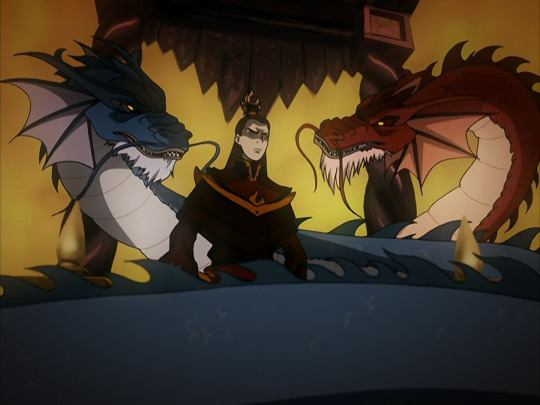
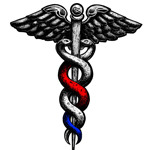
Iroh: You're not the man you used to be, Zuko. You are stronger and wiser and freer than you have ever been. And now you have come to the crossroads of your destiny. It's time for you to choose. It's time for you to choose good.
Why did Zuko have a fever after decided to let go of his Blue Spirit mask? Well, the imagery suggested that he experienced a Kundalini awakening. A Kundalini awakening is a profound spiritual experience that involves the activation and rising of Kundalini energy, located at the base of the spine. In Hindu and yogic traditions, Kundalini is often depicted as a coiled serpent, symbolizing dormant spiritual potential.


Ida and Pingala are the two energy channels that run alongside the spinal column and correspond to the left and right sides of the body, respectively. Ida is associated with the feminine or yin aspect. It is linked to qualities such as calmness, receptivity, intuition, and nurturing. It is also associated with the moon, coolness, and the element of water.
Pingala represents the masculine or yang aspect. It is associated with qualities such as activity, dynamism, alertness, and willpower. It is associated with the sun, warmth, and the element of fire. In the yogic tradition, the balance and harmonization of Ida and Pingala are considered essential for achieving physical, mental, and spiritual well-being.
Once the two energies combine at the crown chakra, a person's consciousness is supposed to transcend duality. What does that mean, exactly? It means to move beyond the perception of reality as consisting of opposing or dualistic concepts, such as good and bad, light and dark, right and wrong, or self and other. You understand that these apparent opposites are part of the same unified whole and are interconnected in a deeper, more profound way.
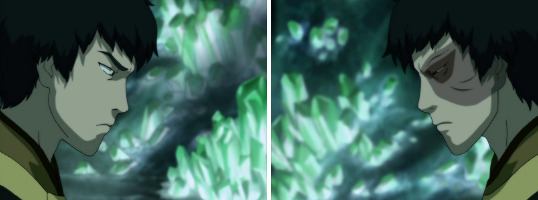
"I was head writer of ATLA, and this is exactly how I see it! There was some controversy that Zuko made the "wrong choice" at the end of season 2. A lot of fans were ANGRY! But it had to be this way… we wanted him to get everything he thought he wanted. The triumphant return. His father's respect, and a seat at his right hand. Only then could Zuko truly outgrow these things, and choose to do the right thing in a meaningful way."
(Aaron Ehasz)
So, the symbolism definitely favors Zutara in that respect. Katara learned through Zuko that the Fire Nation is not innately evil. Even though he hurt her with his "wrong" decision, part of her character arc was understanding why he did it and being able to forgive him. And because he made that choice, she could trauma-dump onto him and that led to her gaining closure about her mother's death.
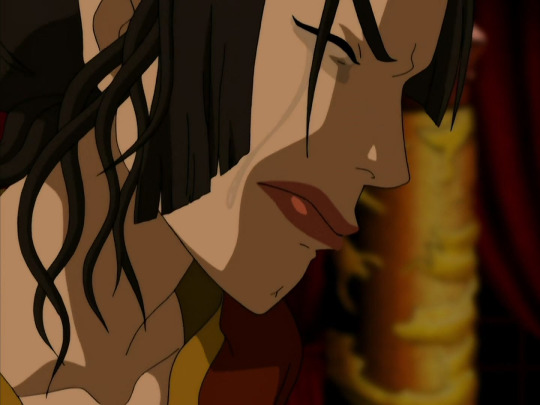
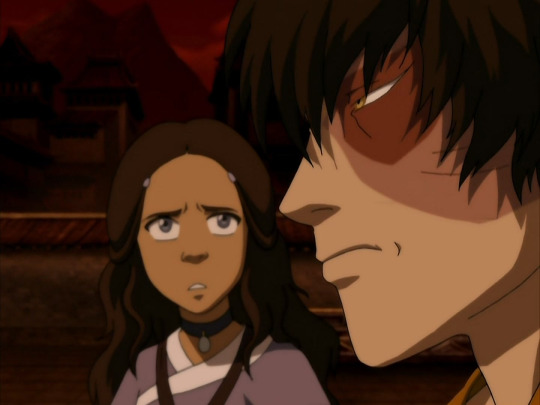
"I was head writer of ATLA. Azula and Zuko's relationship was not always well understood, even by the team internally. Azula loved Zuko, more than anyone save her father. She also felt competitive with him for their parents' attention of course, but since she had alienated herself from her mother, she focused her energy on pleasing dad… which of course meant acting in more and more intense and possibly evil ways."
"By the end of the series, of course, her loss of her friends shatters the part of her identity that she could somehow control affection and love through intimidation. As a result she spirals… I did however intend to leave a kernel of humanity, and had we made a season 4 Azula would have completely bottomed and we would have explored the possibility of a path to redemption. True story!"
(Aaron Ehasz)
But it's not even just Zutara. What I found interesting was that Azula was the blue dragon and Iroh the red dragon. Azula was crazy and needed to go down, right? By siding with his sister, you're meant to think that Zuko chose "evil" instead of "good". But it looks like some of the writers meant for it to be more complicated than that. There was no "good" or "evil" choice. Azula had a softer "yin" side, too.
Zuko wanted to get along with his sister. He did not want to kill her, even though Iroh thought that was the only option. The fact that Azula never got her redemption arc did a massive disservice to Zuko's arc as well. The fact that Azula had good in her is exactly why Zuko's choice in BSS couldn't truly be called "wrong" or "evil".
Azula loved Zuko and that idea wasn't conveyed very well in the cartoon. She was the one person on that beach who actually did understand him. She was jealous that Zuko chose the Avatar over her. And she knew that targeting Katara with her lightning was the best way to hurt Zuko. Katara found a non-lethal way to defeat Azula for Zuko's sake. Because after seeing how hard it was for him to fight her, she finally understood why he made his choice in Ba Sing Se.
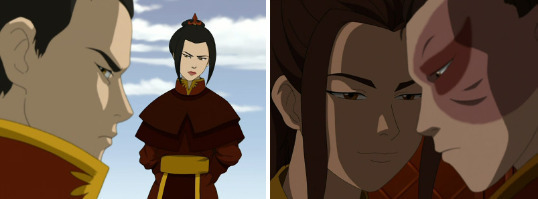
"[Azula] had not bottomed in the end of season 3, she had further to go. At the deepest moment in her own abyss she would have found: Zuko. Despite it all, her brother Zuko would be there for her. Believing in her, sticking by her, doing his best to understand and help her hold her pain that she can no longer hold alone. Zuko — patient, forgiving, and unconditionally loving – all strengths he gained from Uncle Iroh."
"And I always imagined that after coming out the other side, she would be one of those people who hilariously over-shares her own feelings all the time, and that she would be a bit over-apologetic. Like a Canadian version of Azula."
(Aaron Ehasz)
The first episode of Book 3 was called The Awakening. Aang literally awakened to the energy twisted up in the middle of his back. He did not complete his spiritual transformation. The Kundalini energy did not reach his crown chakra. It was still blocked because he had an attachment to Katara that he hadn't worked through yet.
Zuko's awakening was figurative. Mai didn't understand how he felt. Symbolically, when she turned his head to kiss him, it showed the audience the scarred side of his face. When Zuko lied his sister, the unscarred side of his face was shown. I suspect that the writer for the episode, Aaron Ehasz, wanted to hint that Zuko did still feel a connection to Katara and didn't want Azula going after her and Aang.
Zuko in The Crossroads of Destiny was not supposed to be the same Zuko from The Avatar State. Both versions of Zuko still wanted to go home. But 201 Zuko was motivated more by selfish attachment. 220 Zuko was more motivated by love. He loved Azula unconditionally. Even with all of her twisted, ugly, and cruel behavior. His consciousness had transcended the duality of Iroh and Azula being opposites where one is "bad" and the other is "good". During The Beach he was fantasizing about a time when Iroh played with both of them as little kids. Back when they were all a family.

Mai: You know what will make you feel better? Ordering some servants around. I might be hungry for a whole tray of fruit tarts. And maybe a little palanquin ride around town. Double time.
I don't dislike Mai. I think she is an interesting character who was not a bad person or anything. I just thought she served a very specific narrative purpose. She was there to show how Zuko wasn't compatible with his old lifestyle anymore.
Mai wanted a typical socialite boyfriend. They really didn't get along too well or have much to say to each other during The Beach. She didn't like him when he started talking about his trauma and showed his uglier side. Zuko was insecure and jealous because he was not even sure if she really liked him. And she didn't even know the person he was after his banishment, only the person he was as a child. When he turned his head away from her, his unscarred side was shown.
Zuko: When I got to the meeting, everyone welcomed me. My father had saved me a seat. He wanted me next to him. I was literally at his right hand.
Mai: Zuko, that's wonderful! You must be happy.
Zuko: During the meeting, I was the perfect prince. The son my father wanted. But I wasn't me.
He walked out of that war meeting with the scarred side showing. Mai didn't love Zuko. She loved the perfect prince. The fantasy she built up in her head and the role Zuko was acting out at the start of the episode when he was ordering her the fancy fruit tarts.
Mai: I guess you just don't know people as well as you think you do. You miscalculated. I love Zuko more than I fear you.
Mai stood up to Azula to save Zuko, and she genuinely believed she loved him. But he left her behind to be with his new companions. If not for Ty Lee, she would have died. That should have been the end of that relationship. I thought it was very weird that they got back together. The NATLA writers should definitely find a different way to conclude Mai and Ty Lee's character arcs. Especially Mai. She deserved a more dignified ending than being left in prison and then threatening her ex-boyfriend to take her back.


"I love that even though Aang is sort of not in this story very much, to me, he's-his presence is in all of these scenes 'cause you know he's like the little angel on her shoulder [...]"
(Bryan Konietzko)
The main reason I think the shipping discourse in the ATLA fandom is so toxic is because the creators Mike and Bryan saw the narrative differently than the other writers. They seemed to have a completely different vision for the story and characters compared to the head writer. So, there were two conflicting visions and fans who liked one over the other could argue their side indefinitely. Bryke saw things as more black-and-white and good vs. evil. You can see it in some of the interviews and commentary, particularly with Bryan.
IMO, there really was no "good" and "evil" side in The Southern Raiders. There was no "angel" or "devil" sitting on Katara's shoulders. To Katatra, what Aang said must have sounded like nothing more than a trite platitude. It's true that in the end, she didn't choose violence. But I don't think Aang's words were very pertinent to her decision-making when she finally faced Yon Rha, LOL.
It's understandable why Aang would come off as preachy, though. He was just a child coping with his own grief. The Air Nomads' philosophy was one of the only things he had left of them, after all. Such a teaching was no doubt his own personal coping mechanism.
Aang was right in the sense that Katara didn't need to resort to violence in the end. But ya know, maybe she would have if she didn't have someone by her side who understood her inner darkness and accepted her even if she had chosen violence. Just like how Aang might have killed the sanbenders if Katara hadn't been there. And Katara would not have condemned him if he had done so.
"Zuko and Katara might have shared some sparks, but sometimes there are people along your 'journey of love' who are there to teach you about yourself and what you really need, but don't necessarily end up being your partner. Come on, kids! 'Zutara' never would have lasted! It was just dark and intriguing."
(Bryan Konietzko)
Zuko was a character of duality. Yin and Yang. Light and shadow. His two sides were represented by the scarred side and non-scarred sides of his face. I think Bryan viewed Zutara as a "dark" ship because a big part of Zutara was about Katara's shadow side.
Just like Mai did with Zuko, Aang built up a fantasy version of Katara in his head. The perfect, well, "waifu," I guess. The endlessly patient feminine maternal figure. The sweet beautiful girl with such manageable hair. But that's only half of who she was. There was another side to her that he never saw. One that used bloodbending. Angry, hateful. Yes, even ugly. And that's not a bad thing. It's human.
204 notes
·
View notes
Text
Asteroid Lust
Asteroid Lust (4386) it represents our deepest darkest desires. As Lucifer would say “What do you desire?”. It doesn’t refer just at the sexual aspect but also to what we want to do in excess or what do we find attractive. Please read the sign and the house as well, since I’ve notice it most of the times will work 50/50 on how much it resonates.
Lust in Aries/1st house You may be an adrenaline junky, you like to test the limits that your body has. You like to dominate your partners, if someone massages your head it may turn you on. You are attracted to risky places, maybe you are an exhibitionist. You like when your partner is confident.
Lust in Taurus/2nd house You like to connect yourself with all the five senses. You may have a tendency to have excesses when it comes to food. You love lavishing and exquisite meals. You may like to be sense deprived during intimate moments. You may be attracted towards partners that have a sensual voice.
Lust in Gemini/3th house You are attracted and like to have your brain stimulated. We can say that you are a sapiosexual human. In the bedroom you may like to role play and dirty talk. You may also make a lot of obscene jokes. You may have an on and off sexual desires.
Lust in Cancer/4th house You need comfort and protection. You are attracted towards partners that makes you feel safe. You may have an obsession with decorating your house. You may like to be intimate when the Moon is full and also somewhere near water spots. The bust and hips are very sensitive.
Lust in Leo/5th house Deep down you want to be famous or know for your talents. You’re attracted to fun and spontaneous partners, does that can activate your inner child. Your stomach is very sensible and praises are a must in the bedroom.
Lust in Virgo/6th house You like to add value to someone or the community. You enjoy being of service. Probably you like to be submissive in the bedroom. You may have fantasy that implies doctors or nurses. You may try holistic medicine in order to increase or stimulate your partner’s pleasure.
Lust in Libra/7th house: You may express your sensual part more when you are in a relationship. You may also have the tendency to stay way to long in a relationship or to never take a break from dating. You are in love with romance more than anything else. You may like being touched around on the back, hips and lower back especially.
Lust in Scorpio/8th house: You like to merge yourself with your partner. You may enjoy inflicting pain; you may like playing around the fine line of pleasure with pain. You may channel kundalini energy or activated it without realizing it. You need to transform yourself through sex. You may have more extreme taste in love making.
Lust in Sagittarius/9th house: You may be attracted to foreigners or have a think for accents. You may want to experiment outside of your house or country. You need space to explore your sexuality. You are willing to try anything at least once. You may like more rough intercourse.
Lust in Capricorn/10th house: You are attracted to status and power. You may have a domination fantasy. You may also use sex-appeal to climb the leader of social status. You have high stamina and enjoy having all night sex. Usually, your very selective to the people you go in bed with.
Lust in Aquarius/11th house: You may want to be polyamorous or have more than 1 partner. You don’t like conventional settings. You need freedom to express and explore yourself. You may enjoy cosplay and role plays. You may be one that prefer having friends with benefits.
Lust Pisces/12th house: You have a desire to a soulmate and to end all the pain in the world. You project your fantasies into your partner. You may have a hunger for sexual encounter that feel etherical or that merges your souls together.
COPYRIGHT ‼️
Do not copy my posts or you will be sued for copyright infringement. All it takes is copying me a few times and it is considered illegal due to the copyright claim written at the bottom of my posts
Do not rewrite/copy my observations and post them to your Tiktok, Tumblr, Instagram

#astrology#astro observations#astro notes#astro placements#lust#asteroid#zodiac placements#zodiac#all signs#aries sign#taurus#gemini#cancer#leo#virgofacts#libra#scorpio#sagittarius#capricorn#aquarius#pisces
979 notes
·
View notes
Text
Check in on your voice. What's living in us can heard in the tones and textures of our voice. The pitch of our sound. The love, maturity, and depth of our capacity. The passion and liberation in our range. Voices shift and transform based on what is alive and active in our energy, whether feeling insecure, unwell, or in full throttled, arch-back, liberated pleasure. Check in on your sounds. How soft, strong, deep, open, and wide can you go? Your voice will tell you many things you need to know about your own body. What's living and what's dead. --India Ame'ye, Author
India Ame'ye (born in 1976) is a devotee of Kundalini and a Priestess of the Lover-Warrior Goddess lineage she adoringly named "The Grandmothers.' These ancient women had full connection with their entire bodies beginning with their mulabandhas, and knew when it was time to plant and when it was time to harvest. India is committed to the resurrection of the Divine Feminine and the regenerative wellness and liberation of female physiology to support the greater good of the global world. India believes in moving through the wilderness of the lies and distortions and stepping into one's truest, boldest, most unbridled, self-expressed, abundant form and essence. Stay tuned for her new series of books, "The Melody of Love." Bring love but also bring a machete.
206 notes
·
View notes
Text


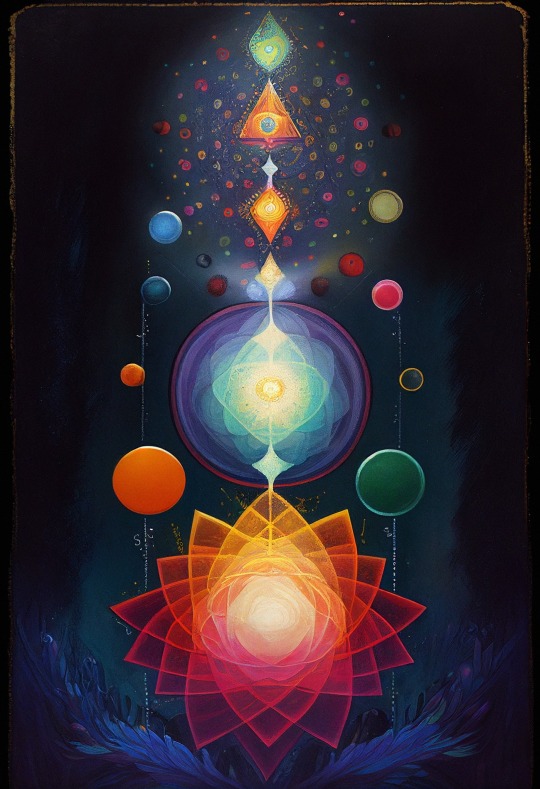
Crown Chakra: The Thousand Petal Lotus of Spirit
Talon Abraxas
Crown Chakra
Seventh Dimensional Chakra: (Crown Chakra):
It is associated with the colour Violet, Gold and White
The Crown Chakra carries the energies of Enlightenment, Divine Illumination and God’s Realization. It is located on the top of the head and is the source of our higher consciousness. When fully opened, the Crown Chakra becomes the conduit through which our Holy Spirit, God Self, Christed Self, Buddhic Self or Divine Essence is brought down into our physical being. When all seven of the chakras are opened and aligned and we have purified ourselves and have become totally harmless, the “Gifts of the Holy Spirit” are returned to us. (1 Corinthians 12)
Balanced Crown Chakra: Wisdom, Mastery, Unification of the God Self with Human Personality, Bliss, Intuition, Expanded Consciousness, Knowingness, Transcendence, Oneness, Deep Understanding, Service to Others, Spiritual Energy
The Crown Chakra is often called the thousand-petal lotus. Throughout history, it has been depicted in paintings of Jesus de Christ, Buddha, Saints, Angels and other highly evolved beings as a golden white halo around their heads. When the Crown Chakra is fully opened an awareness of our divinity and the true essence of our being is understood and integrated. The crown chakra will not fully open until all seven of the chakras and corresponding energy fields have been purified enough for divine energy to be released activating the Kundalini. The Kundalini is a divine spiral of energy similar to a coiled snake that lays dormant at the base of each person’s spine (root chakra) until proper purification has occurred within a beings system for it to safely ascend up the chakra column. The crown chakra connects us to our masculine Father God while the root chakra connects us to our feminine Mother Goddess or Mother Earth. If the kundalini is able to move through each chakra and does not encounter any blocks it will move up into the crown chakra opening a pathway for each person’s God-self to descend into their physical body. Kundalini is the Creator’s energy. It is our divine birthright to activate this part of ourselves so we can become conscious co-creators here on Earth. When our system is properly prepared, the decision of our God-self washes over each of the seven chakras breaking the seven seals and activating the creation of our divine luminous light body. This prepares us to move forward into Self Mastery where we have the potential to fully activate and embody our Holy Grail becoming a Divine Enlightened Human.
58 notes
·
View notes
Text
Aphrodite was a sex goddess, Kali was a sex goddess, Baset was a sex goddess, Inanna, Magdalene, shall I continue?
Sex is woman’s true power, its about activating her kundalini energy.
In the Bible Eve was naïve and under the rule of a man. (Lower self) Lilith went her own way and activated her kundalini energy. (Higher consciousness) 
Sex/sexual power or being a sex goddess does not equal being a “whore” like they want you to believe . But it also doesn’t mean to allow just anyone into your sacred garden of energy. Sex goddesses can have as much or as little sex as they want . They harvest their energy and redirect it for creation. They have control over themselves and know how to properly use their power. Sex is supposed to be used just like magic, a sacred manifestation tool. A sex goddess has mastered this.
209 notes
·
View notes